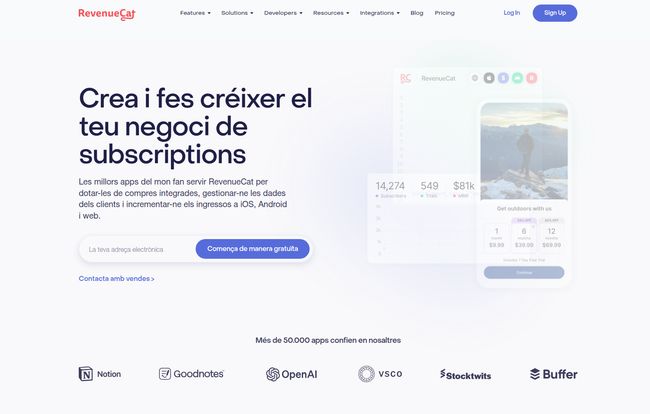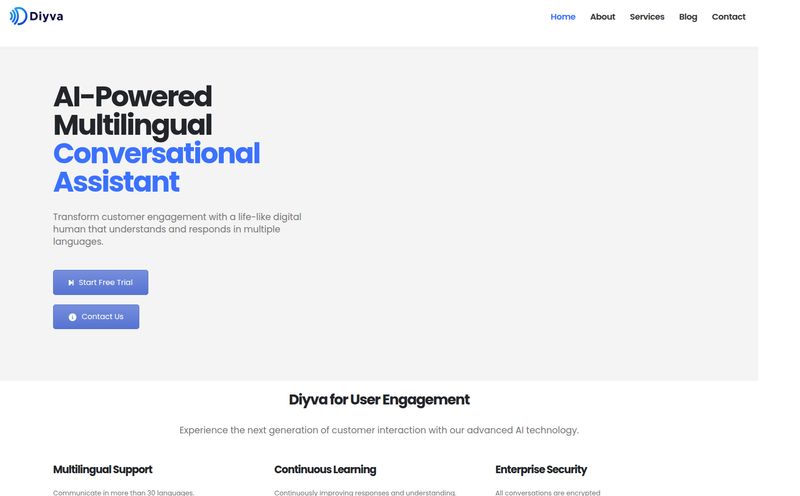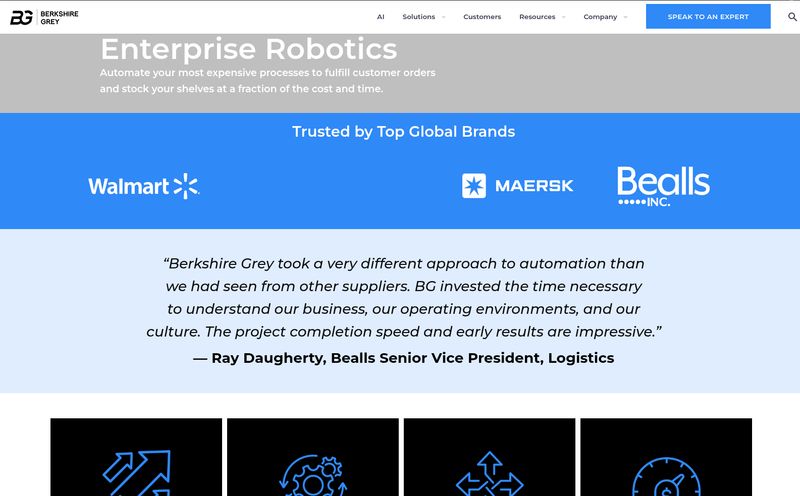Just you and me. If you’ve ever tried to build in-app subscriptions from scratch, you know the pain. It’s a special kind of nightmare, isn't it? You're juggling Apple's StoreKit on one side, Google's Play Billing on the other, and they speak completely different languages. It’s like trying to host a dinner party where your two main guests refuse to be in the same room. The server-side receipt validation alone is enough to make a grown developer weep into their keyboard.
I've been there. I've wasted weeks—no, months—on that hamster wheel. Building, testing, fixing edge cases, and then tearing it all down when Apple or Google decides to change everything overnight. It's time and money you should be spending on, you know, your actual app.
So when a tool comes along that promises to take all that pain away, my inner cynic immediately perks up. But every so often, something actually delivers. That's what I want to talk about today: RevenueCat.

Visit Hedy AI
So, What is RevenueCat, Anyway?
Think of RevenueCat as the universal translator for in-app purchases. It's a backend-as-a-service (BaaS) that sits between your app and the app stores. You implement their single, lightweight SDK, and it handles all the gnarly, complicated communication with Apple and Google for you. No more wrestling with disparate APIs. Bliss.
But it's more than just a simple API wrapper. It's a complete subscription management platform. It gives you a centralized place to see all your subscribers, track revenue, analyze churn, and even run experiments. It takes the messy, disjointed data from both stores and presents it to you on a clean, unified dashboard. In short, it’s the tool I wish I had five years ago.
The Real Reasons RevenueCat is a Game Changer
Okay, so it saves you from some coding headaches. Big deal, right? Well, it's the knock-on effects that are truly transformative. It's not just about saving time; it's about what you can do with that saved time.
A Single Source of Truth for Your Revenue
Getting accurate subscription metrics is ridiculously hard. Apple and Google give you data, sure, but stitching it together to get a clear picture of your Monthly Recurring Revenue (MRR), Lifetime Value (LTV), or churn rate is a full-time job. RevenueCat does this automatically. It normalizes all the data into beautiful, easy-to-understand charts. For the first time, you can actually trust the numbers you're seeing without building a complex ETL pipeline. That's huge.
Build and Test Paywalls Without a Single App Update
This might be my favorite part. With RevenueCat's Paywalls feature, you can remotely configure and change your offering screen. Want to test a yearly plan versus a monthly one? Or change the marketing copy? You can do it from their dashboard, and the changes go live instantly. No need to submit a new build to the App Store and wait a week for review. This allows for rapid A/B testing and optimization that was previously unthinkable for most small to medium-sized teams. The VSCO case study, where they reduced churn by 5%, is a perfect example of this power in action.
Your Backend Suddenly Understands Subscriptions
With webhooks, RevenueCat can tell your server exactly when a subscription starts, renews, cancels, or a free trial is converted. This means you can easily grant and revoke access to premium features on your own backend. It also integrates with a ton of other tools. You can send an event to an analytics service when a trial starts, add a user to a specific email list in Mailchimp when they subscribe, or create a ticket in Zendesk when a subscription is refunded. It turns your app's revenue events into actionable triggers across your entire tech stack.
A Quick Look at the Core Features
While the big-picture benefits are great, sometimes you just need to see the feature list. Here’s a rundown of what you get inside the box:
| Feature | What It Does |
|---|---|
| Cross-Platform SDK | One codebase for managing subscriptions on iOS, Android, and even the web. It's a massive time-saver for developers. |
| Unified Subscriber Data | See every customer's full subscription history in one place, regardless of platform. Great for customer support. |
| Charts & Analytics | Real-time MRR, churn, LTV, and other critical subscription metrics without any setup. |
| No-Code Paywalls & Experiments | Design, deploy, and A/B test your paywalls from a web interface. No app updates required. |
| Powerful Integrations | Send subscription event data to tools like AppsFlyer, Mixpanel, Amplitude, Zapier, and many others. |
As you can see from the images, they are trusted by some absolute giants in the app world—Notion, Goodnotes, OpenAI, Buffer. When companies with that level of engineering talent choose to use a third-party tool instead of building it themselves, that should tell you something.
Okay, How Much Does RevenueCat Cost?
This is where it gets really interesting. The pricing model is, in my opinion, incredibly fair and designed to grow with you. I've pulled the latest pricing from their site, but always double-check for the most current info.
- Free Plan: This is the crazy part. For apps making less than $2,500 in monthly tracked revenue, RevenueCat is completely free. You get most of the core features, including the unified SDK, analytics, and customer history. This is perfect for indie devs and startups just getting off the ground.
- Starter Plan: Once you cross that $2,500/month threshold, you move to the Starter plan. It's priced at a percentage of your tracked revenue over that initial free amount. This plan includes everything in Free, plus chart annotations and more data history.
- Pro Plan: This is for larger, scaling businesses. You get everything in Starter, plus the really powerful stuff like Experiments (for A/B testing), premium integrations (like Amplitude and Braze), and access to their API.
- Enterprise: Custom pricing for the big players who need dedicated support, advanced security, and all the bells and whistles.
The fact that you can build your entire subscription infrastructure and not pay a dime until you're actually making real money is just fantastic. It completely removes the risk for new apps.
My Final, Unfiltered Opinion
So, is RevenueCat the magic bullet? Honestly, for 95% of app developers and businesses, the answer is a resounding yes. The amount of time, money, and sanity it saves is almost immeasurable.
Is there a downside? Of course. You're adding a dependency to your tech stack. If RevenueCat has an outage (which has been extremely rare in my experience), it could affect your app. But let's be realistic—the chances of you introducing a critical bug in your own hand-rolled subscription code are astronomically higher. I've seen it happen time and time again.
Building and maintaining subscription logic is undifferentiated heavy lifting. It doesn't make your app unique or better for your users. It's just plumbing. And unless you're a plumber, you should probably hire one. In this case, that plumber is RevenueCat. It lets you get back to what actually matters: building a great product that people love and are willing to pay for.
Frequently Asked Questions about RevenueCat
- Is RevenueCat secure?
- Yes, it's very secure. They don't handle payment processing themselves (that's still done by Apple and Google), and they are SOC 2 Type 2 compliant, which is a high standard for data security and privacy.
- Does RevenueCat take a percentage of all my revenue?
- No. This is a common misconception. Their paid plans are based on your Monthly Tracked Revenue (MTR), but the first $2,500 of that is always free. You only pay on the revenue above that threshold, and only on the paid plans.
- Can I migrate my existing subscribers to RevenueCat?
- Yes, you can. RevenueCat has documentation on how to migrate your existing users without forcing them to re-subscribe. It can be a bit of a process, but it's entirely doable.
- What integrations does RevenueCat support?
- A whole bunch! Key ones include analytics platforms like Mixpanel and Amplitude, marketing tools like Braze and CleverTap, attribution services like AppsFlyer and Branch, and of course, Zapier, which connects to thousands of other apps.
- Is the free plan actually useful?
- Absolutely. It's not a crippled trial version. You get the full power of the SDK, the backend receipt validation, the charts, and the integrations needed for a new app. It's more than enough to get started and scale to a meaningful revenue level.
The Verdict
Stop debating whether to build your own subscription code. Just don't. The industry has moved on, and for good reason. Using a tool like RevenueCat is the new baseline. It’s a competitive advantage that frees up your most valuable resource—your team’s time—to focus on creating value for your users. Give the free plan a shot. I have a feeling you wont be looking back.



